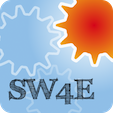 | |||||
Splinter - TRANSMITMarcio Aquino, Alan Dodson, Giorgiana de Franceschi, Vincenzo RomanoTuesday, 18th 14:00-15:30 TRANSMIT is the Training and Research Network to Support the Mitigation of Ionospheric Threats, a Marie Curie ITN (Initial Training Network) funded under the FP7 People programme. The aim of a Marie Curie ITN is to improve the career perspectives of researchers who are in the first five years of their research career, in both public and private sectors. TRANSMIT comprises a consortium of universities and research centres in Europe led by The University of Nottingham, with associate partners from top European industry stakeholders, as well as industry and academia from as far as Brazil and Canada. The project kicked off in February 2011 and provides a coordinated training programme covering the mitigation of ionospheric threats to systems of relevance to the European society, in particular to Global Navigation Satellite Systems (GNSS). The project ends in January 2014 and this splinter session will showcase its main outcomes, with special attention to prototype operational tools, developed by the project fellows, that could contribute to a service designed to assist European users in countering GNSS vulnerability to ionospheric phenomena. The splinter will include the following presentations which will be open to and welcome discussion. Agenda
Back to the splinter overview |
| ||||
|
| |||||







